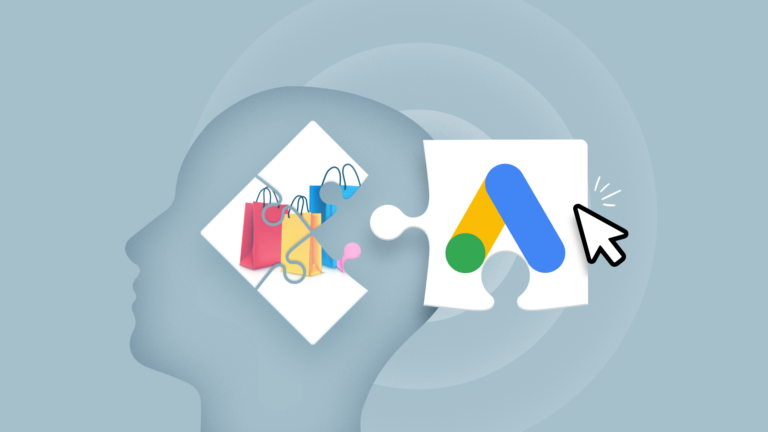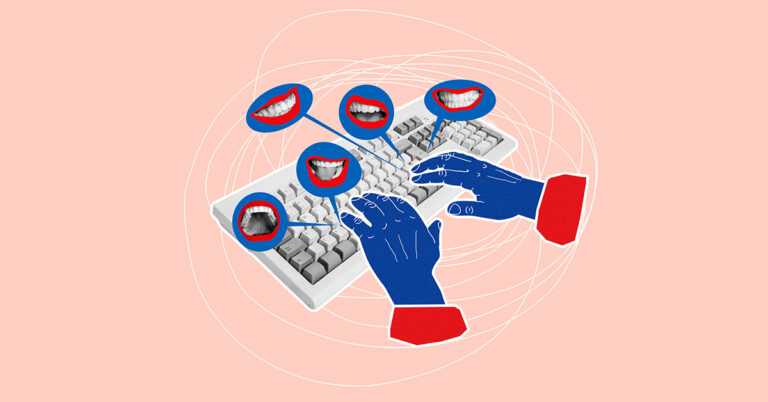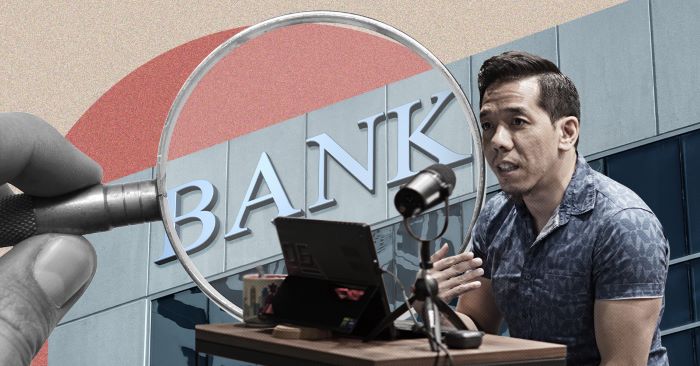Truelogic Episode 20 Recap: How does B2B Digital Marketing Work?

The digital age has changed the way marketers communicate with and sell to B2B audiences. It does not only demand quicker interaction methods, but it also requires a more integrated and flexible approach as technology develops further.
B2B digital marketing refers to marketing of products and services to other businesses and organizations through online channels and digital technologies. A study revealed that 82% of marketers consider B2B digital marketing services as a new “business driver” and 65% of marketers plan to increase their B2B digital marketing spend. Apart from that, 2023 will be a pivotal year for the US B2B digital ad market as spending approaches $15 billion.
Let’s discuss how you can implement an effective B2B digital marketing strategy to grow your business in today’s Truelogic DX Podcast.
Podcast Transcription
Berns San Juan: B2B marketing is when you’re trying to capture the attention of businesses or institutions rather than your individual consumers. It is more about targeting than it is about volume. So with that out of the way, welcome to the Truelogic DX Podcast today, we’ll take up B2B marketing, how it’s changed, developed, and thrived in the online environment.
Business to Business (B2B Marketing) vs Business to Consumer (B2C Marketing)
- Nature of targeting
When you say B2B, you’re trying to capture the attention of a person inside an institution inside the company so your user personas are not necessarily millennials or people in this age group or in that economic category, they tend to be specific job titles like purchasing officers, business owners, marketing directors, and so on. So the nature of the targeting is very different because when you’re doing B2C, you have the ability to cast a wide net like if you were doing targeting.
- Goals are different
It’s easy to push somebody to a path to purchase –from awareness to the close– with B2C compared to B2B. You’re probably selling something that’s got a warranty, that’s got a master services agreement and so on and so forth. So the B2B sales process is significantly more complex and it also has a long lead time.
- Purchase motivation
In B2C you’re getting a person to spend money out of their own pocket and with B2B, you’re getting that person to spend money out of their boss’ pocket. You make a mispurchase and you’re going to get fired for it. You might have bad pair shoes. You’re not going to get fired for it but if you buy a bad service, if you flush your boss’ money down the drain, there are consequences. So the drivers for a purchase are usually different. Most of the time you’re trying to find out, are they looking to solve a problem for the first time? Are they looking for a better way to solve the problem? So the motivator for a purchase is drastically different.
- Number of people involved in a purchase
Most of the time, if you’re targeting B2C, you’re either targeting the individual or the individual and their spouse. If you’re targeting senior high school, you’re probably targeting the student and their mom, right? Or a student and their parent, or the parent and their child, and that’s it. But if you’re targeting B2B, you’re probably involving a business decision maker. Like in our case, somebody involved in marketing, a purchasing officer, maybe a CFO. So the people involved in the process have a significantly more complicated process to complete.
- Online marketing
You do have to be a bit more picky when it comes to the channels that you use. I would say social media, no brainer on B2C, but on B2B, you have to do it more tastefully. It’s a very different journey when you’re advertising on Facebook and you’re a service provider. I’ll take us, for example. We’re present on Facebook and we’re very B2B, but the content that you put out for B2B audiences cannot be the same content that you put out for consumers.
Benefits of Marketing Online
- Boost awareness
When you’re marketing online, one of the things that you can do is drive awareness to your brand. I would still say this is where traditional marketing and brand activation still have a hand to play. But the trouble with brand activations and traditional marketing is you can’t really trace the path to purchase all the way till the end and this is where digital startup comes in.
- Generate leads
Now with most B2B campaigns, the target for us almost always is inevitably to generate more leads, generate more inquiries, generate more phone calls, probably not foot traffic, but it’s always generating more inquiries to our products, inquiries to our services. But it’s always leads. I would say 80%, this is what we’re doing now.
- Improve website performance
There is a question of, okay, so you got their attention, you got them to consume the content on your website. This is where B2B marketing is still part, remember it’s still pre-sales until they become your customer.
- Streamline sales funnels
How do you speed up the sales process? How do you streamline the sales process? Where do you remove the unnecessary friction in a B2B customer’s buying experience? How do you make the products or services intuitive to them? Where can they see your price list? Where can they see your menu of services? By setting up different pages on your website that identify different levels of maturity down the sales funnel or different levels of intent, all the way to different services, you’re shortening the qualifying time.
- Increase sales
Of course B2B marketing isn’t very useful if it doesn’t impact your sales right?
- Identify which digital marketing campaigns move the needle
Which channels get you the most conversations started, which channels should you double down on? Which ones deliver on qualified leads because you may get 200 inquiries on one channel at 3% qualifying rate, but you may get 60 on another channel at a 20% conversion rate. So you want to measure every stage of qualification that your customers go through to know, where should you double down? Where should you invest your dollars or your bestsellers in terms of marketing?
B2B Digital Marketing Strategies
- Top funnel campaigns
Normally, when we run campaigns, we like to find out, are we talking about top funnel, mid funnel or bottom funnel campaigns? And when we see top funnel campaigns, we’re talking about measuring the number of people that saw your content. So the number of eyeballs that you’re able to attract is similar to CPMs in traditional marketing, but are you doing a top funnel campaign? Are you trying to find out how many people are now aware of your brand and are now aware of your product or your services?
How many people’s attention are you attracting so that you can convert them to your audience? So what you’re doing is filtering out the people that are seeing your messaging, but are not really relevant to your business. They’re not part of your target audience and so what you’re doing now is audience segmentation, which is still very much part of your top funnel, by the way, when you’re building an audience. They leave footprints in your website and these people that behave in a certain way, these people with receptive behaviors on your website get defined as your audiences.
You then put your next stage of marketing specifically targeting only that because their behavior tells you that your content is relevant to them. You create a target audience, you create some brand awareness. That’s your top funnel.
- Mid funnel campaigns
If you’re a mid funnel, campaigns are about engagement. This is where you want them breathing your content, becoming a repeat visitor through your website, sending an inquiry, downloading checklists and case studies, engaging with you on social media and sharing your posts.
I would say content marketing plays a big role in the middle of the funnel, like once they’re your audience, once they’re receptive to your content marketing, it becomes very effective at turning them into a conversion later down the funnel.
- Bottom funnel campaigns
Bottom funnel campaigns are when you actually get them to hint that there is a potential business relationship by calling a phone number that is deliberately set up to receive business inquiries, or normally by receiving an inquiry through your contact forms. It is about you getting qualified leads through your business out there.
So in terms of strategy, are you prioritizing top funnel metrics, mid-funnel metrics, bottom funnel metrics? Depending on which section of the funnel you’re targeting, make sure you’re using the right channels.
B2B Marketing Trends to Watch
- Measuring the ROI remains the number one challenge
This has been marketers’ number one challenge since 2016. I’m just saying let’s be honest but I do see working with clients for three, four years, you’re seeing them wanting to demystify the investment they made in marketing to the return in revenue that they actually acquired.
- Roughly half of B2B marketers plan to create more case studies in 2022
If you’re doing B2B marketing case studies, these are sort of like your showroom, especially if you are a service provider. Case studies do matter for the brands, they are very effective at either starting conversations or generating leads.
- Creating brand awareness
The number one goal for B2B marketers in 2022, you know, for me, sadly, it’s still brand awareness. This might be true for, I would say, this is so true for emerging brands, but for established brands, brand awareness should not be your top priority. You are underplaying the full power of B2B marketing.
Remember that when you say brand awareness, you’re creating awareness. So that means you’re really talking about you. You’re not talking about their problem and one of the things that I always like to say in digital marketing, and it’s not just doing digital marketing, this is true for everything, your customers don’t care about you until you care about their problem first. Sure do brand awareness, but don’t only do brand awareness because out of all of the metrics you’re looking at, that’s the one that’s hardest to stitch the ROI.
- Content marketing
B2B marketers say their highest priority is optimizing load speed. Being an SEO I gotta be honest that can’t be your most effective SEO strategy. Sitespeed is, at best, a 37% influencer of whether you will perform or not. It’s still content. It’s still content marketing. It’s still marketing storytelling on your website, on your marketing material that will influence whether you start conversations or not.
B2B Marketing Best Examples
- QuickBooks
If you use QuickBooks for your businesses, which we did, you might be familiar with the Danny DeVito gift tease, where they shot videos of him and they turned them into like a hundred gifts that they then publish like memes on social media that did really well.
- Shutterstock
Shuttershock has very edgy content in my opinion. Like I wouldn’t say that the messaging they did, it’s safe for all brands to try to employ, but I think it matches the personality of the brand, right? Like they’ve got things that are like Game of Thrones, or model parody.
- Go Negosyo
Another brand that does well, and I’ll go local this time – Go Negosyo puts out a lot of content on social media and they leverage the power of influencers. This is to encourage Filipinos to be micro or small business owners. So they’re doing a good job on social media in terms of content marketing.
- Hubspot
HubSpot has taken upon itself to educate people about marketing, demystifying marketing. There is so much learning content in the HubSpot platforms
- Lazada
I heard Lazada is starting to take on Lazada University, which is a good type of content marketing and community building.
- MailChimp
The fact that they get thousands of subscribers every month is a testament to how well they do it without having to dive through too many tangents.
I hope we’ve given you a quick bird’s eye view of B2B marketing. I want to thank you for listening to another episode of the Truelogic DX Podcast. If you have any questions, comments, or suggestions, give us a shout out on social media.
We are on Facebook, LinkedIn, and YouTube, and check out our website for more digital marketing resources. Don’t forget to subscribe to our Spotify, Google, and Apple accounts and set up your alert for new episodes.










